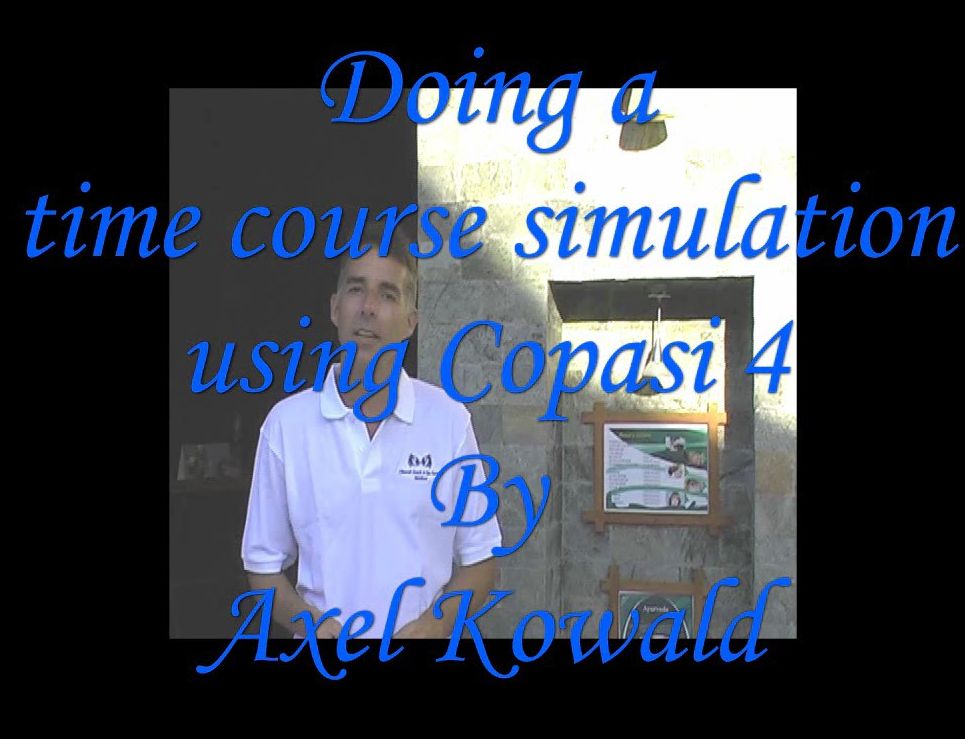
Video Tutorials
Systems biology is a new emerging discipline that aims at a deeper understanding of complex biological systems which components that interact in a non-linear way. It is notoriously difficult to get an intuitive feeling for the behavior of these types of systems and the approach is therefore to combine mathematical modelling with appropriate experiments. Obviously many numerical data are needed for this, such as data on enzyme kinetic parameters, enzyme and metabolite concentrations, affinity constants and degradation rates. For this a close cooperation between modeller and experimentalist is needed and intended. In the last years we have, together with colleagues, written two books about methods, tools and strategies in systems biology ( Systems Biology in Practice and Systems Biology: A Textbook) that have been published by Wiley-VCH. As part of these publications we also produced a number of video tutorials that give a hands on demonstration how certain tasks can be accomplished using certain tools. We produced the videos in WMV format because it generates small files and can be viewed under Windows as well as Linux or Macintosh. If you have problems finding an appropriate player, try MPlayer.
This tutorial runs for 31 minutes (size 32 MB) and covers basic techniques for developing and simulating a dynamical model in CellDesigner4. We start by exploring the GUI and constructing a model containing a single reaction. We learn how to add species, reactions and compartments to the model. We also show how to align objects, add an annotation layer and use model notes. We then add a kinetic law to the reaction and use some arbitrary values for the parameters, so that we can run a time course simulation. Although this simulation is deterministic we set up the right parameters and units to use this SBML model for stochastic simulations in other programs.

This tutorial runs for 14 minutes (size 18 MB) and gives a first introduction to Copasi. We do not create a model from scratch, but import the simple model we developed in our tutorial about CellDesigner. After looking at the differential equations that make up the model, we then discuss how to run a time course simulation and use the output assistent for producing a plot of the simulation results. Since Copasi can also perform stochastic simulations we then perform such a simulation and compare the results with the deterministic run. For this we explain how to manually create a new plot, which is not obvious in Copasi.

This tutorial runs for 18 minutes (size 25 MB) and shows how to do a parameter estimation in Copasi4B24. As in the last tutorial about Copasi we do not create a model from scratch, but import the simple model we developed in our tutorial about CellDesigner. Then we explain the dialog box to start the parameter estimation in Copasi and what the input file with the experimental data has to look like. Using the output assistent we create a plot and a report file of the fitting process. After the fit we have a quick look at the contents of the generated report file. Next we explain how to transfer the fitted parameter values into the model and finally we do a time course run using the fitted values. For this we also explain how to manually setup a plot window for the simulation results.

This tutorial runs for 10 minutes (size 12 MB) and shows how to do time course simulation in Dizzy. It is a free software tool written in Java and can be downloaded from the Institute for Systems Biology. Dizzy is specialized in stochastic time course simulations, but can also perform deterministic ones. In this tutorial we import the simple model we developed in our tutorial about CellDesigner. We do a stochastic and deterministic simulations and discuss why it is helpful to do both types of simulations. This is a basic tutorial and does not cover more advanced Dizzy features like the build in command language or running Dizzy simulations as batch jobs without GUI. This will be the topic of other tutorials.